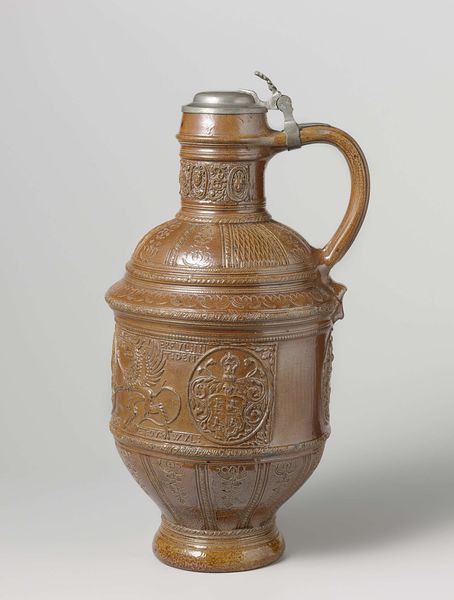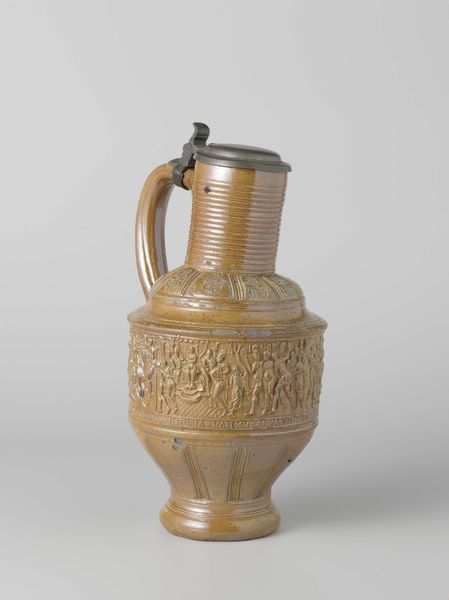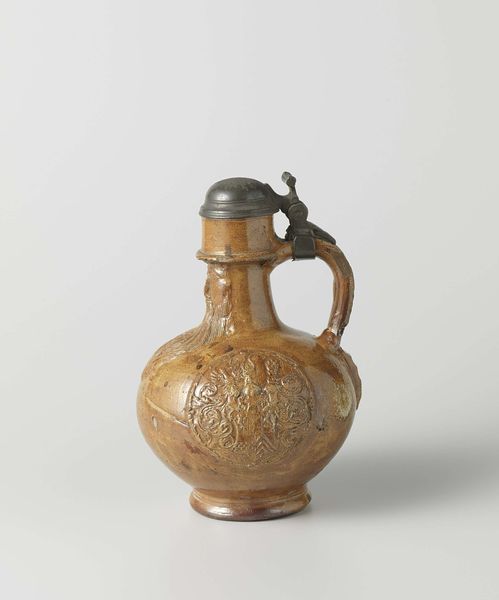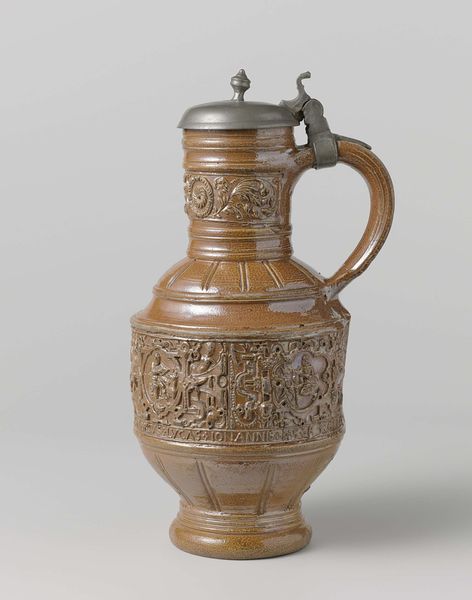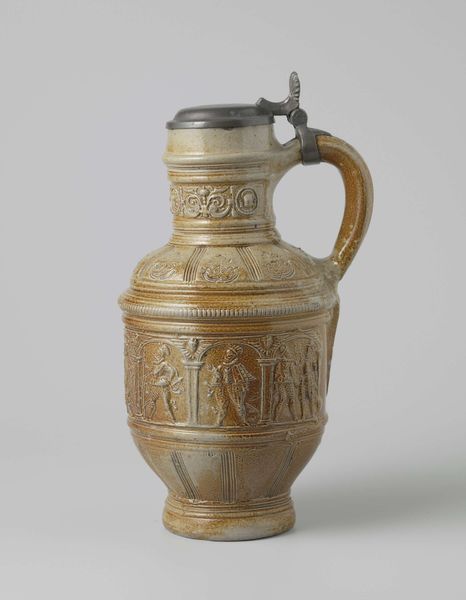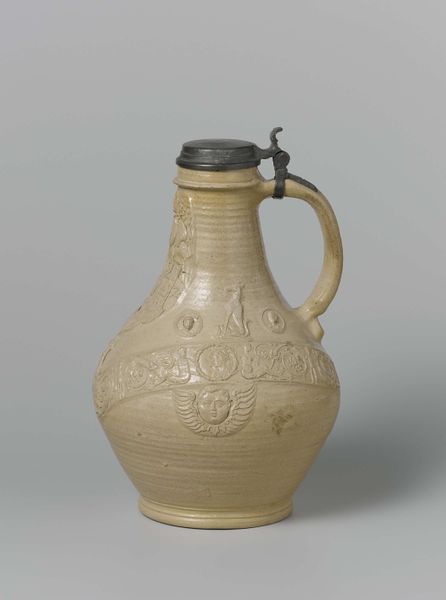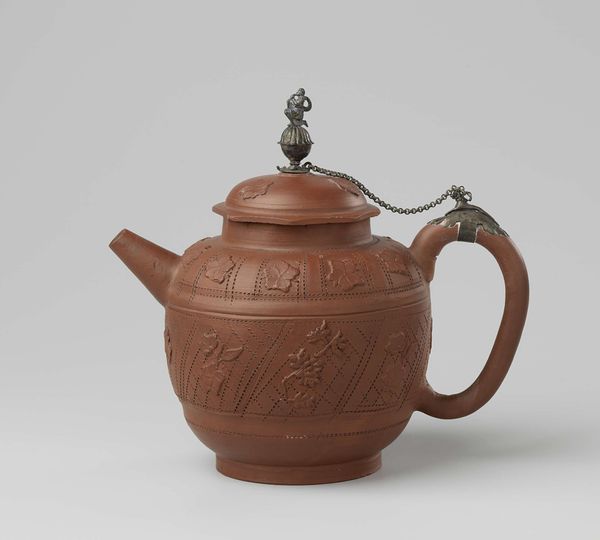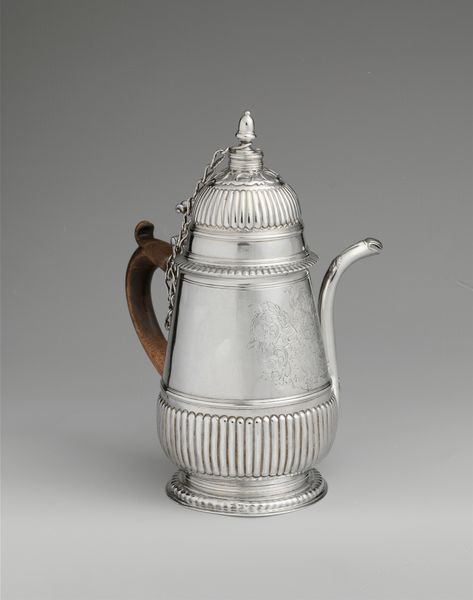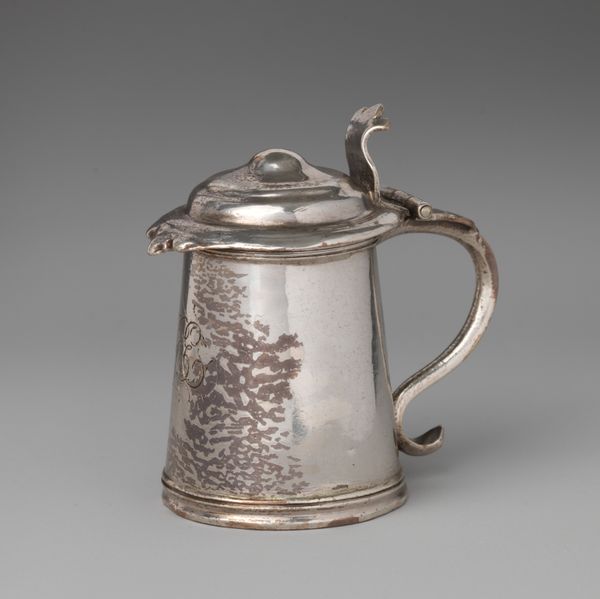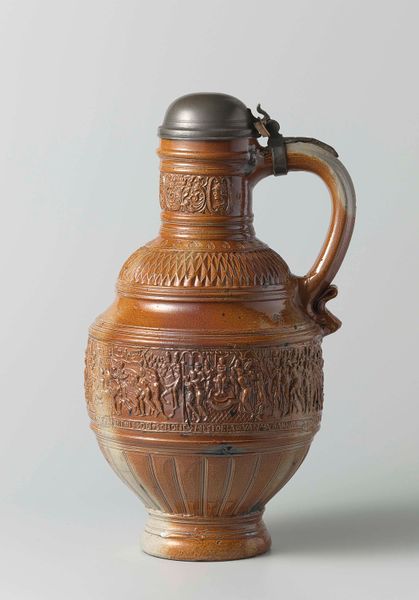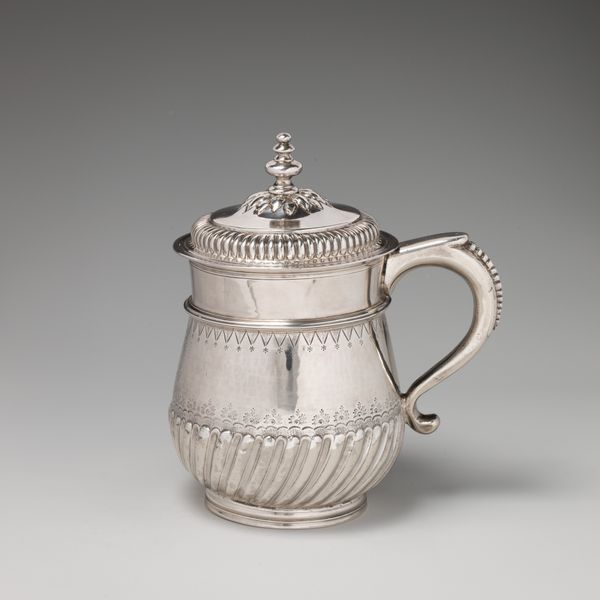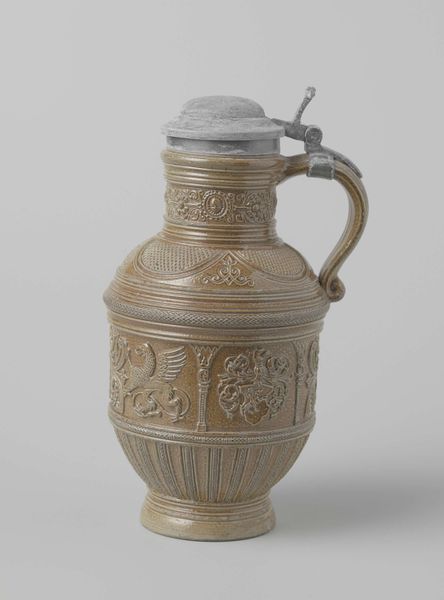
ceramic, earthenware
#
baroque
#
ceramic
#
earthenware
#
stoneware
#
ceramic
#
decorative-art
Dimensions: height 28.4 cm, height 24.5 cm, diameter 7.9 cm, diameter 14.9 cm, diameter 13.8 cm, width 17.6 cm
Copyright: Rijks Museum: Open Domain
Curator: Let's turn our attention to this intriguing object: a stoneware tankard, crafted anonymously between 1700 and 1730. What catches your eye first about it? Editor: It’s the weight of it, visually. It looks substantial, the clay feels dense and the color is so earthy, very grounding somehow. Curator: Indeed. These tankards, like this one bearing the coat of arms of Saxony-Poland, were status symbols. They spoke of power, trade, and intricate social connections of the elite. This example now resides in the Rijksmuseum. Editor: Stoneware’s always interesting to me because it walks the line. Is it art, is it craft, or both? Think of the potter, shaping and firing this—there’s a whole labor history baked right into that material, not just the elite symbolism you mentioned. How were these made? Were they commissioned? Curator: Precisely, it speaks to the politics of production, doesn't it? This was likely produced in Westerwald, a region renowned for its stoneware, which benefited greatly from exports to royal courts and wealthy merchants. The decoration itself served a purpose; it affirmed power and legitimacy during a politically turbulent time, especially for rulers seeking to solidify their influence. Editor: The cobalt in those arms too – where did that come from? That tells a story about trade routes and global consumption of raw materials. It’s never “just a tankard,” is it? It is also worth noting how practical and strong these things must have been too. Curator: Absolutely. Beyond mere utility, however, it reflects a carefully cultivated image of royal authority – consider the layers of messaging woven into a seemingly mundane object, something accessible enough to hold and use! Editor: It does makes me think differently now to consider all the global economics behind even humble tableware. The act of drinking from this would carry weight, both literal and figurative, then. Curator: It really did. It shows how something like a tankard became a vessel not only for liquid, but also for carefully projected dynastic aspirations. Editor: Well, that is indeed food for thought next time I pour myself a drink! I’ll never look at stoneware the same way again. Curator: Nor I. It always pays to look deeper into seemingly everyday objects to find layers of meaning we otherwise might miss.
Comments
No comments
Be the first to comment and join the conversation on the ultimate creative platform.
